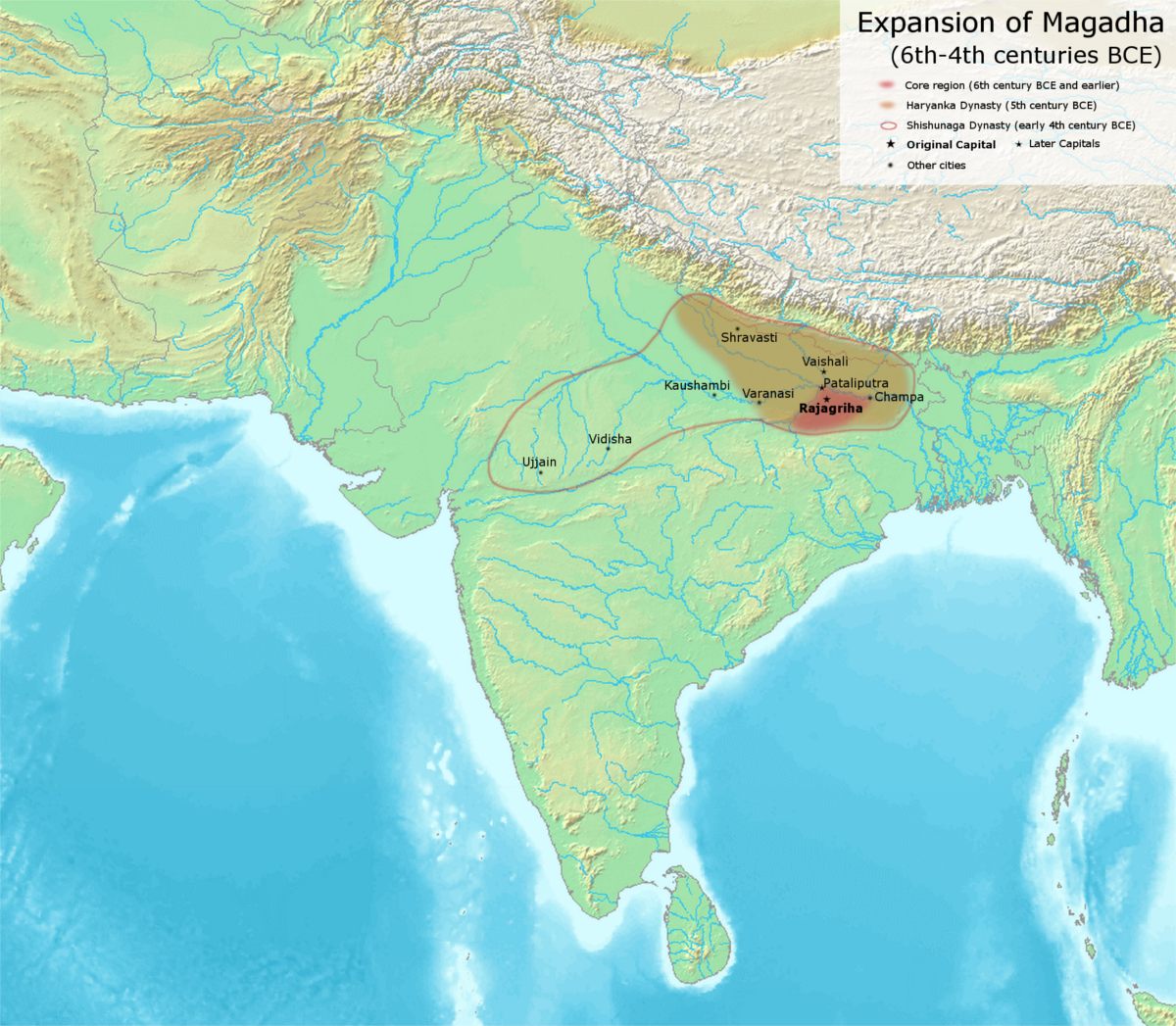26-02-2025 Mains Question Answer
Q. Highlight the factors which led to the rise of Magadha in Mahajanpada period.
Approach
Introduction: Mention the location of Magadha and the period during which Magadha strengthened its position.
Body:
- Highlight the factors that led to the rise of the Magadha Empire. (Also draw a diagram showing the location of Magadha.)
- Explain the impact of the rise of the Magadha Empire in the Indian Subcontinent.
Conclusion: Explain how the rise of the Magadha Empire shaped Indian political history for the coming centuries.
Answer: Magadha was located in the eastern part of the Indian subcontinent, in present-day Bihar, and rose to prominence during the Mahajanapada period (6th-4th century BCE). It was one of the sixteen Mahajanapadas and became a powerful kingdom under the rule of the Haryanka and Nanda dynasties, notably during the reign of Bimbisara and Ajatashatru.
Factors Leading to the Rise of Magadha:

- Strategic Location: Magadha’s strategic location between the Ganges and Son rivers offered fertile agricultural land, particularly suitable for rice cultivation. Moreover, its proximity to key trade routes fostered economic growth and regional interactions.
- Political Stability and Strong Leadership: The leadership of powerful kings like Bimbisara and Ajatashatru helped Magadha consolidate power. Bimbisara’s strategic alliances and territorial expansion through marriages with neighbouring kingdoms strengthened Magadha.
- Military Strength: Magadha’s strong military, especially its cavalry and war elephants, played a key role in its rise. The kingdom frequently engaged in military campaigns, expanding its territory significantly.
- Economic Prosperity: Magadha’s fertile land and successful irrigation systems supported agriculture, which was the backbone of its economy. Urban centres like Rajgriha (modern-day Rajgir) and Pataliputra (modern Patna) became bustling centres of trade and commerce.
- Religious and Cultural Influence: The rise of new religious movements, such as Buddhism and Jainism, within Magadha helped the region gain cultural significance. Support for these religious movements strengthened Magadha’s social fabric and made it a prominent cultural hub.
- Effective Administration: The Haryanka dynasty established a stable and organised administration that helped maintain control over the growing empire. Efficient revenue collection systems and taxation policies contributed to Magadha’s economic and military strength.
- Internal Discontent and Decline of Rivals: Magadha’s rise was aided by internal conflicts in rival states like Kosala, Vrijji, and the Licchavis, which weakened them. Ajatashatru capitalised on these weaknesses to annex territories and expand Magadha’s influence.
- Strategic Alliances: The Haryanka dynasty’s diplomatic strategy included forging alliances through marriage, which helped in consolidating power. Bimbisara’s alliance with the powerful Licchavi tribe of Vaishali helped him extend his influence.
Impact of the Rise of the Magadha Empire:
- Unification of North India: Magadha’s rise led to the unification of a large part of northern India, which helped in the establishment of centralised rule. The region’s power served as a model for future empires in India, including the Mauryas.
- Growth of Pataliputra: Pataliputra (modern Patna) became the capital and a major centre for politics, culture, and commerce under Magadha’s rule. The city’s rise made it a hub of administration, connecting various parts of the Indian subcontinent.
- Cultural Development: Magadha’s dominance brought about significant cultural development, particularly in art, literature, and philosophy. The spread of Jainism and Buddhism contributed to religious and philosophical discourse across India.
- Technological and Economic Advancements: Under Magadha’s rule, there were advances in agriculture, architecture, and urban planning, which led to better trade and communication networks. The use of iron tools and improved infrastructure further propelled economic growth.
- End of Tribal Republics: The rise of Magadha led to the decline of several tribal republics, like the Vrijji confederacy and the Licchavis, marking the end of the republican system in the region.
The rise of Magadha marked a significant turning point in the history of the Indian subcontinent. It brought political unity, economic prosperity, and cultural growth, laying the foundation for future empires. The establishment of a centralised empire set the stage for the Mauryan Empire, which would shape the course of Indian history for centuries.

